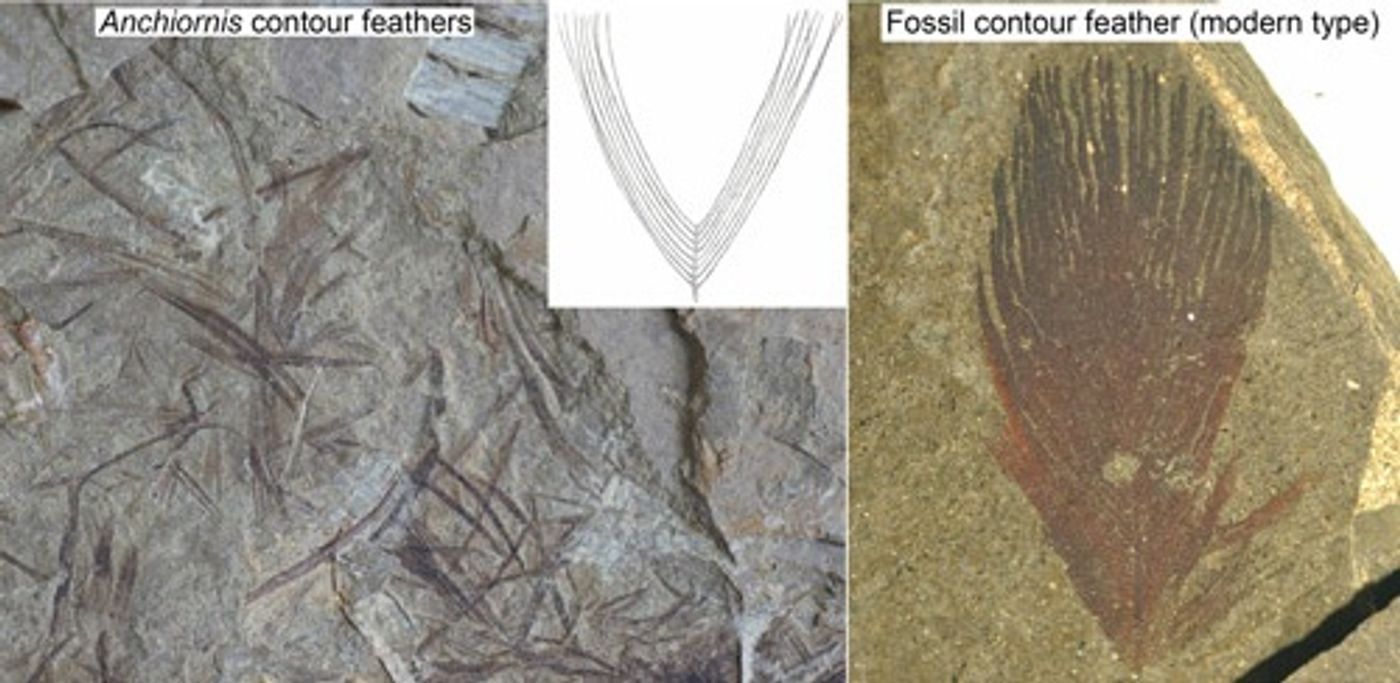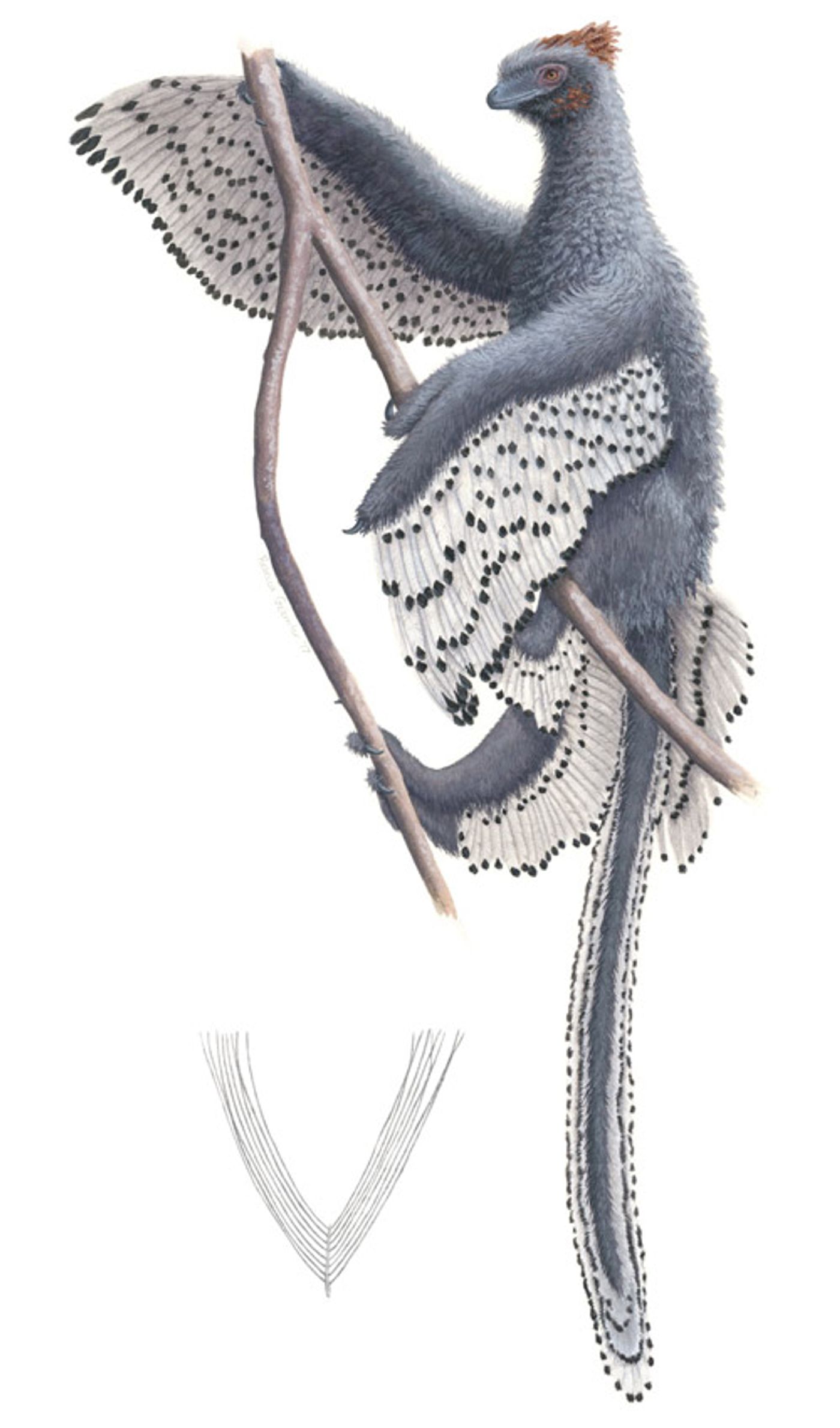Were Dinosaurs Fluffier Than We Originally Thought?
Modern discoveries indicate that many dinosaurs might have been feathered like birds rather than scaly as classic Hollywood films like Jurassic Park depict, but paleontologists from the University of Bristol now imply that some dinosaurs could have been fluffier than initially thought.
Their study, which made its way into the journal Paleontology this week, came shortly after analyzing the well-preserved fossil of an Anchiornis. A closer examination of the paravian dinosaur underscored a peculiar discovery regarding its feathers.
Image Credit: University of Bristol
The feathers exhibited curiously-short quills with independent, elongated barbs that would’ve flopped around a whole lot more than a modern bird feather does today.
The overall structure speaks volumes about Anchiornis’ appearance. While birds exhibit continuous body lines from their tightly-zipped feather vanes, Anchiornis instead had loosely-zipped feather vanes, implying that they probably looked fluffier than modern birds.
These shaggy feathers would have had implications for the Anchiornis’ way of life as well. The loosely-zipped vanes fostered more independent movement, leaving the ancient creature with hardly any temperature control or water resistance to speak of.
Furthermore, these feathers wouldn’t have been as aerodynamic as those found on today's birds. The creature compensated for its lack of aerodynamics with an extra set of wings and multiple rows of feathers that helped make gliding feasible.
Related: Did dinosaurs actually roar?
Image Credit: Rebecca Gelernter via University of Bristol
“Anchiornis is presented in this artwork climbing in the manner of hoatzin chicks, the only living bird whose juveniles retain a relic of their dinosaurian past, a functional claw. This contrasts much previous art that places paravians perched on top of branches like modern birds,” said study lead author Evan Saitta from the University of Bristol’s School of Earth Sciences and School of Biological Sciences.
“Overall, our study provides some new insight into the appearance of dinosaurs, their behavior and physiology, and the evolution of feathers, birds, and powered flight.”
Related: How hard could a T-Rex bite?
As the researchers note, the study sheds light on the appearance and behavior of Anchiornis, but given that most fossils aren’t as well-preserved as the one studied here, it's possible that many other dinosaurs could have exhibited similar traits.
Future fossil-driven studies could shed light on the countless questions that remain about Anchiornis and the bevy of other dinosaur species that walked the Earth before humans did. It should be fascinating to see what these studies will unveil.
Source: University of Bristol










